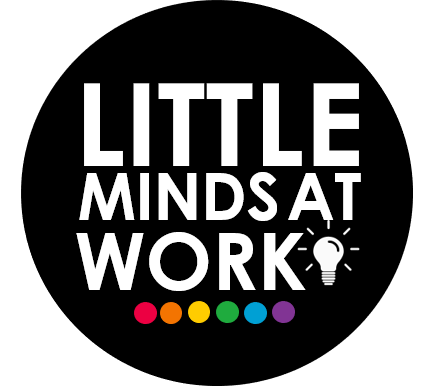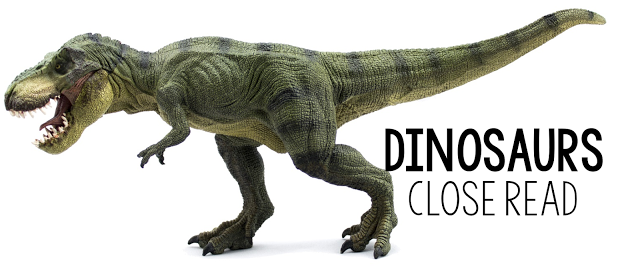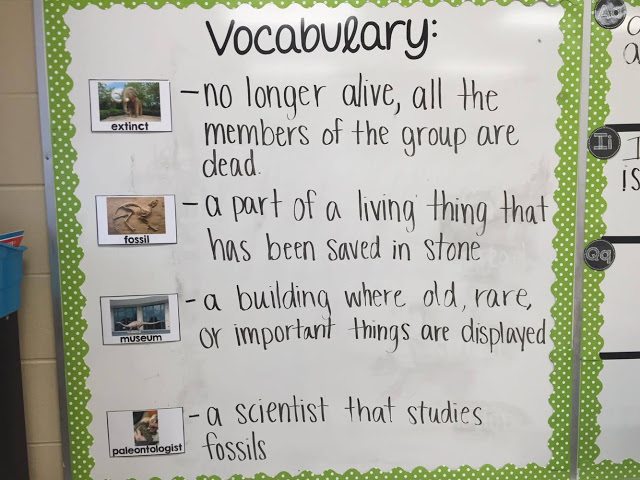KinderLiteracy in Action: Dinosaurs!
Hello. Hello. I mean that was a little too mellow for the the GIANT dinosaur above. So, let me try this again…..RAWR! I hope this post finds you doing well and excited to zoom through this last quarter of school! Today I wanted to take a moment to share with you a couple of KinderLiteracy videos! I love watching teaching videos and they are the only true way I *get it* without having to reread way too many times! Visual learner here! I shared several videos HERE towards the beginning of the year. However, we know our little lads have grown so much in their abilities to share about the text…so I wanted to share the possibilities to really kick up your day 2 {vocabulary} and day 3 {text-dependent questions}. It is very important to me to stand behind my literacy units and not just through a sale on TpT, but I want to make sure after your purchase that are you happy and comfortable with teaching the units so that your students benefit as well! That’s why I will keep the videos coming!
There are a few things I’d like you to take special note in the videos! First off…you’ll hear Miss Buss repeat herself and the students A LOT! We often get into the routine of our day and and will ask a question, get an answer, and move on. However, the repeated questioning, rephrasing, and repeating you’ll hear in the videos gives your students multiple opportunities to learn the information and increases the engagement. For example, listen to to this statement. I want cake. Now listen to this series of statements… I want cake. Do you want cake? I want cake! You and I both want cake! I mean I am now clearly engaged and my mouth is watering for cake! Miss Buss won’t be talking about cake {sadsville}, but still listen for her constant repeating and rephrasing! It works!
Something else that you’ll want to take note for day two {vocabulary} is the students listening in for their own version of tricky words! Instead of just teaching the unknown words Miss Buss gives the students the opportunity to state which words they think are tricky. This promotes buy in gives students a purpose for listening to those passages! They also get to see the process from start to finish… I hear a tricky word, I learn what the tricky word means, I put the meaning with the tricky word as I reread.
Again, the videos are from my KinderLiteracy close read units. These units are explicit in all you need to do is print the plans and you’re set! There is no finding your own words or questions.. I have that prepped for you! Below are the essential questions and I can statements for the week for your reference in case you don’t have the units! Also, the questioning and vocabulary words are aligned to THIS National Geographic Dinosaurs text. Below are the essential questions and I can statements for the week for your reference in case you don’t have the units!
As you watch the videos below you can follow along with the transcript! You can also print the transcript out HERE.
DAY TWO VOCABULARY
Word One:
“I’m
going to read this page and you’ll let me know of which words were tricky!”
Reads aligning passage.
Asks for tricky words.
Calls on student {extinct}.
Rereads passage.
Rephrases student question.
Students turn and discuss word.
Calls on student. Places student answer into text. Affirms.
Calls on student. Places student answer
into text. Affirms.
Checks definition.
Creates action for extinct.
Word Two:
Rereads passage. Asks for additional unknown word. {fossils}
Asks for thumbs up/down if they know it.
Calls on student. Places student answer into text. Affirms.
Calls on student. Places student answer into text. Affirms.
Calls on student. Places student answer into text. Affirms.
Rereads text that gives definition.
Students tell their partners what a fossil is.
Word Three:
Rereads text for tricky word {paleontologist}.
Asks students to think about a paleontologist.
Rereads text.
Calls on student. Places student answer into text. Affirms.
Rereads definition.
Students teach their partners what the definition is.
Word Four:
Leads students to the next word {museum}.
Students teach partner what the word is.
Rephrase overheard student answers.
Places student answers into text. Affirms.
Reads definition.
Here is a snapshot of the week’s classroom vocabulary display!
“I want you to visualize what does a
dinosaur look like?”
Repeats question.
Models possible answers to assist their thinking.
Reads question from lesson, “What did
dinosaurs look like?” {pg. 10}
Reads passage from text.
Asks, “So, how did we know some dinosaurs
were scaly like lizards?”
Student answers. Teacher rephrases
student answer.
Student answers. Teacher affirms.
Student answers. Teacher affirms answers
by going back into the text and reading.
Teacher follows up with a real life similarity.
“So, the text was giving us clue about
how scientists learned about dinosaurs.”
Teacher rephrases question and answer.
Teacher reads text
that aligns to question {page 14}.
Teachers reads question, “How does the
author support the statement that not all dinosaurs were big?”
Rereads question.
Rereads passage from text.
Rereads question.
Students turn to partner to share their thinking.
Rereads passage.
Rereads question.
Calls on student. Asks student to state
which information was IN the book.
Rereads passage.
Calls on student. Affirms student answer by proving the illustration supports.
Calls on student. Affirms student answer by stating it was in the text.
Question Three:
Teacher asks question, “What clues does the picture give us the word do
not?”
Reads question.
Reads passage.
“Look at the pictures are they giving you
extra clues that the words do not?”
Calls on student. Student proves
answer by approaching the book.
Teacher asks student how that details gives us clues.
Teacher calls on student to state how that picture gives clues.
Teacher calls on student to state opinion on page.
Teacher gives real-life scenario of the dinosaur picture.
“That was some good thinking! I have a bonus question. If the picture were giving us that detail who
gave us that the author or illustrator?”
Question Four:
Read question, “Scientist know that
some dinosaurs ate meat and some ate plants.
What evidence did they use to support this?”
Teacher restates question.
Reads text. “Oh look I found this page,
What do Dinosaurs eat?”
Rereads question.
Reads text.
Rereads question.
“Point to what we looked at!”
Rephrases question and answer.
Question Five:
“Our next question is about inferring, who can tell me what it means to
infer?”
Calls on student.
“I give an idea. Do I just give a silly idea or an idea that
matches the text?”
Reads question. “What can you infer
about dinosaurs as mothers? Use evidence
from the story to support.”
Reads text.
Rereads question.
Rephrases question and text.
Calls on student. Redirects answers.
Calls on student. Rephrases student
answer and models how this inference was made.
Question Six:
Introduces comparing and contrasting as concepts.
Reads question, “Compare and contrast
dinosaur mothers to animals that are not extinct.”
Preps students to answer question by thinking of an animal in the
wild. Compare that animal to a dinosaur
mother.
Models thinking.
Models comparing/contrasting dinosaur and bird.
Calls on student for animal choice.
Offers background knowledge for those not aware of mother dogs.
Rereads question.
Offers think time.
Students share with their partner.
Calls on student. Restates student
answers and how that relates to the question.
Calls on students for answers.
If you have any questions about the video or KinderLiteracy always feel free to email me at ta******@ho*****.com or comment below! I hope you have the best day and give it your best RAWR!
Much Love,




all the technical KINGDOM777 solutions and staff we need for 에볼루션 카지노 operators who provide world